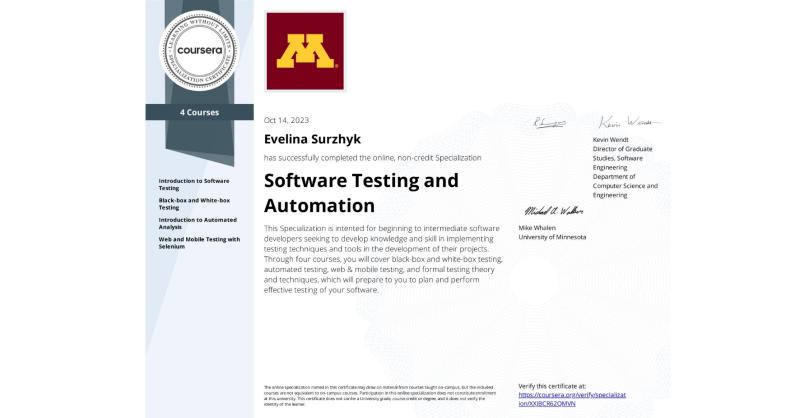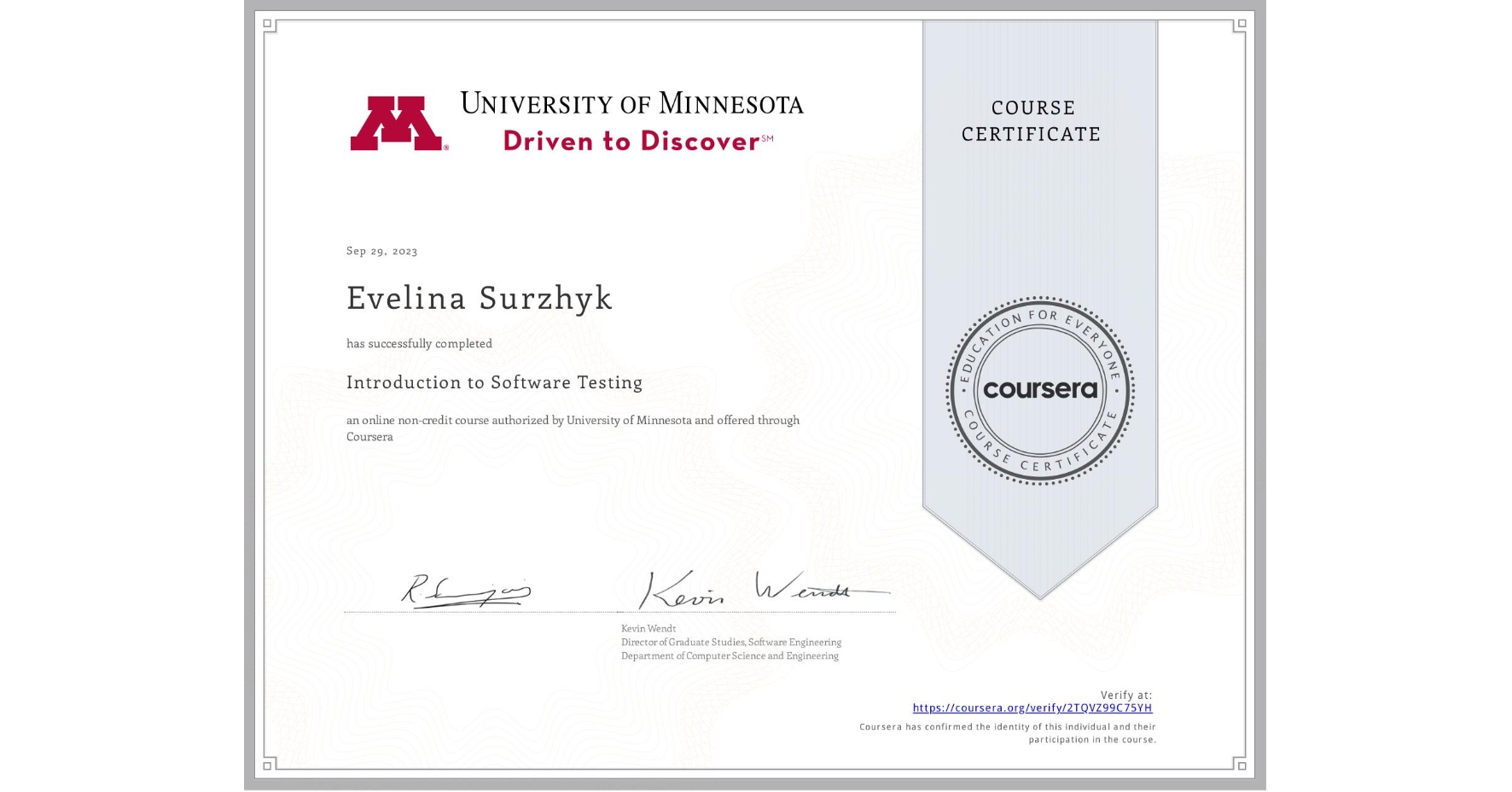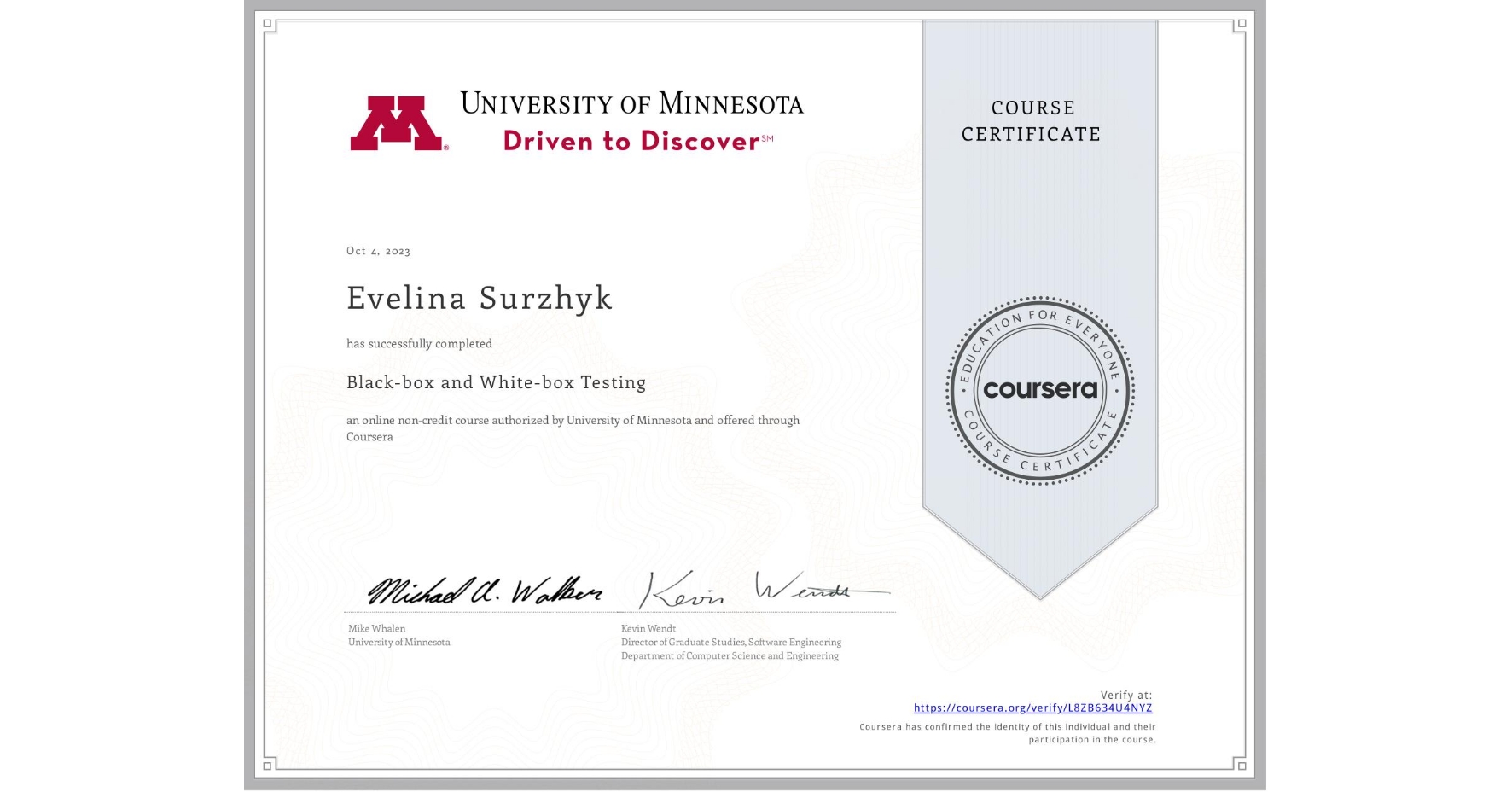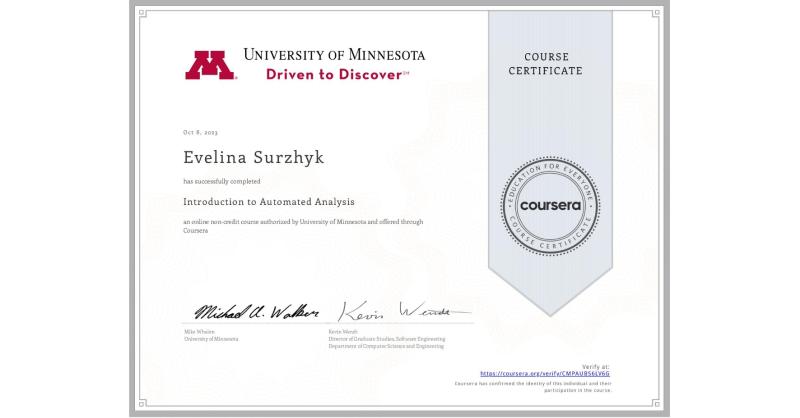
Elevating Expertise: Certifying My Knowledge in Software Testing
University of Minnesota Courses
Introduction to Software Testing
Following the exploration of testing methodologies, I embarked on a transformative journey through the “Introduction to Software Testing” course at the University of Minnesota. This course broadened my horizons by providing a comprehensive understanding of the software testing lifecycle, techniques, and best practices. The certification obtained emphasized the importance of effective testing in ensuring software quality, empowering me to apply these concepts in real-world testing scenarios.
Black-box and White-box Testing
My educational voyage commenced with a comprehensive exploration of Black-box and White-box Testing at the University of Minnesota. This course served as an enlightening introduction to two fundamental testing methodologies. Gaining certification in both black-box testing, focusing on functionality without delving into the underlying code, and white-box testing, centered on code examination and structural aspects, has equipped me with invaluable insights into crafting effective testing strategies.
Introduction to Automated Analysis
Continuing my educational journey, I recently achieved yet another significant milestone by completing the “Introduction to Automated Analysis” course offered by the University of Minnesota. This course delved into the realm of automated analysis, providing a deeper understanding of how automation can be leveraged to enhance the efficiency and accuracy of software testing processes. The knowledge and skills acquired from this certification have broadened my perspective and enriched my toolkit, empowering me to embrace automation and implement it effectively in the realm of software testing.
Web and Mobile Testing with Selenium
The journey of continuous learning in the field of software testing reached its apex with the “Web and Mobile Testing with Selenium” course at the University of Minnesota. This course marked the final step in a series of four comprehensive courses that constitute the “Software Testing and Automation Specialization” at the University of Minnesota. The specialization encompassed a spectrum of crucial topics, including Black-box and White-box Testing, Introduction to Software Testing, Foundations of Software Testing and Validation, and culminated with the intricacies of web and mobile testing using Selenium.
This particular course, focused on web and mobile testing utilizing Selenium, was a pivotal experience. It provided hands-on knowledge and skills essential for testing in modern web and mobile environments, further enriching my expertise in automated testing. The certification from this course significantly bolstered my proficiency in leveraging Selenium as a powerful tool for efficient and effective testing of web and mobile applications.
University of Leeds Course
Foundations of Software Testing and Validation

As my thirst for knowledge grew, I furthered my educational pursuits with the “Foundations of Software Testing and Validation” course at the University of Leeds. This advanced course honed my skills in software validation, emphasizing the critical aspects of system testing, integration testing, and regression testing. The certification I achieved in this course equipped me with the tools and methodologies required to perform efficient and effective testing, ensuring the reliability and integrity of software systems.
The Transformation Continues: A Future Fueled by Education The knowledge and expertise gained through these certified courses have proven instrumental in shaping my journey as a software testing professional. These educational experiences, crowned with certifications, have not only provided a deeper understanding of the software testing landscape but have also nurtured my passion for excellence in this dynamic field.
Conclusion: The Educational Odyssey The certified courses in Black-box and White-box Testing, Introduction to Software Testing, Foundations of Software Testing and Validation, and Web and Mobile Testing with Selenium have been vital stepping stones in my educational odyssey within the realm of software testing. The certifications obtained from these esteemed institutions have invigorated my commitment to growth, enabling me to traverse the exciting path of software testing with heightened proficiency and enthusiasm. As I move forward, armed with certifications, I am excited to continue learning, further honing my skills, and making meaningful contributions to the world of software quality assurance.
The Global Significance of English in the Programming World
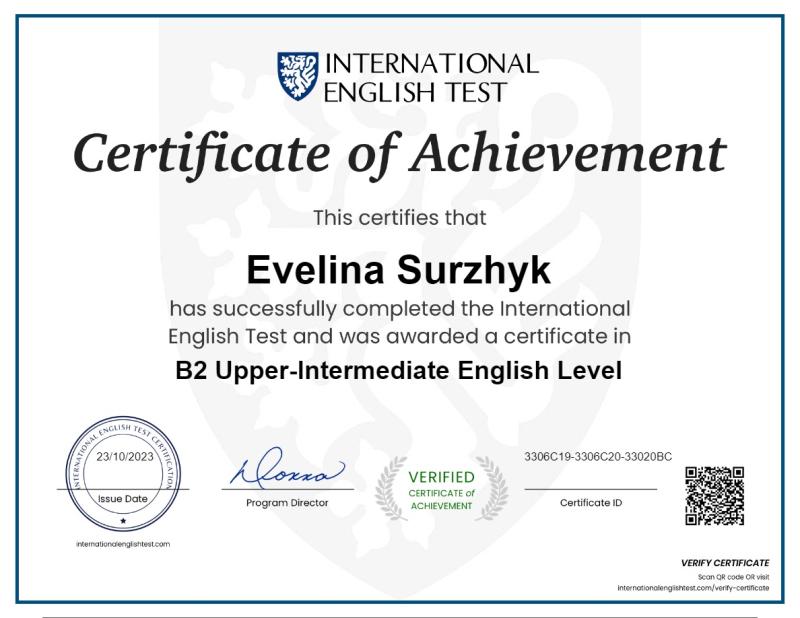
In the realm of programming, the absence of English never ceases to astound me. Each time I delve into this field, I am struck by the sheer marvel of this language. It is truly remarkable how English has evolved to become the universal language for communication across the entire world.
In the vast and diverse landscape of programming, English plays a pivotal role as the lingua franca. It serves as the common thread connecting developers, coders, and technology enthusiasts from all corners of the globe. This global phenomenon is a testament to the adaptability and reach of the English language.
In a world where countless languages are spoken, English’s prominence in the programming domain is a beacon of unity. Its adoption as an international language for coding and development has opened doors to collaboration and innovation that transcend geographical and cultural boundaries.
As the digital age continues to evolve, English remains the glue that binds programmers together. It facilitates the sharing of knowledge, the exchange of ideas, and the development of cutting-edge technologies. Whether it’s reading documentation, writing code, or participating in online forums, English is the bridge that enables programmers to connect with one another and contribute to the global tech community.
In conclusion, English’s ubiquity in the programming world is a marvel that never fails to impress. Its status as the international language of communication within this field highlights the power of language to unite and drive progress in the ever-expanding realm of technology. It is a language that transcends borders and has become an integral part of the global programming culture.


